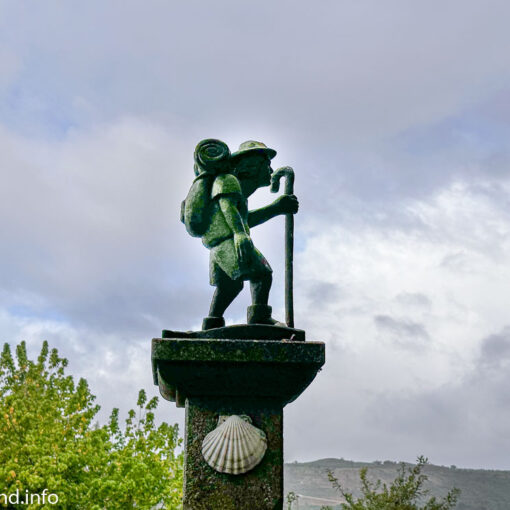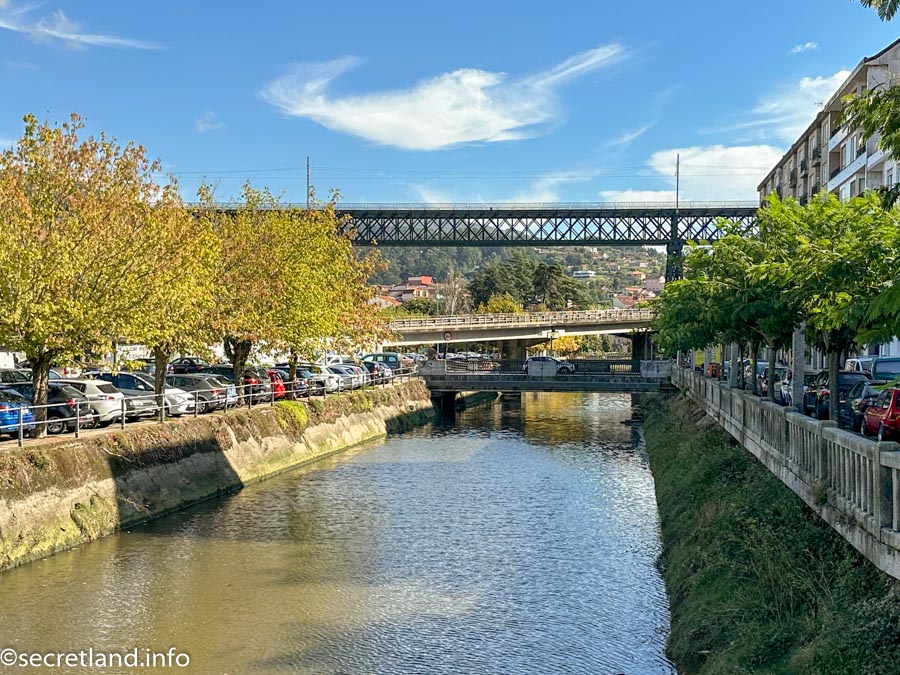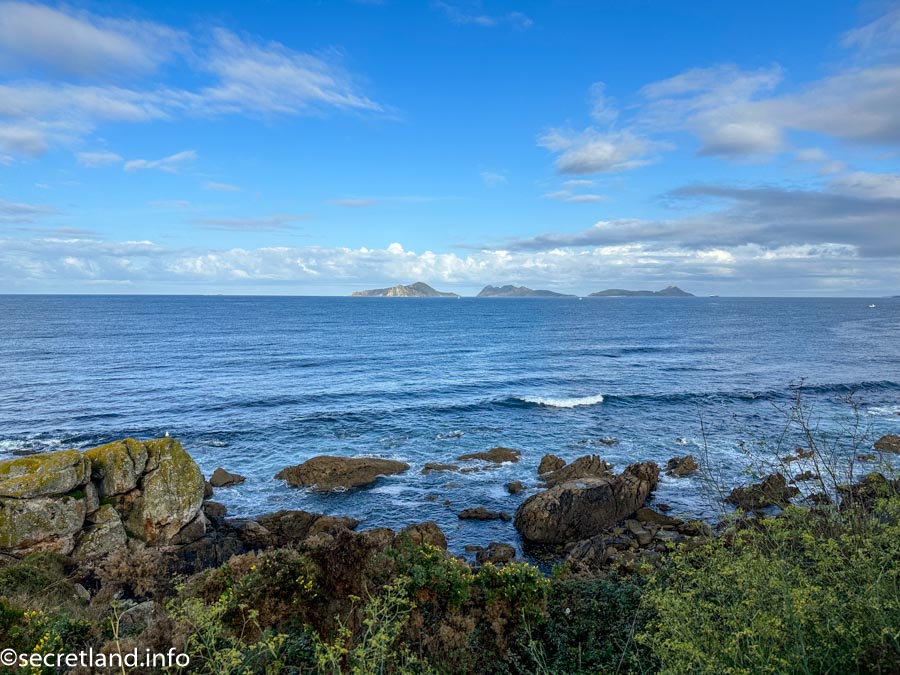The walk on the fifth day of my Camino Portuguese — the Portuguese Way of St. James — was the shortest. That day, I had to cross the Minho River by boat and arrive in Spain, in the town of A Guarda. The crossing is located in the town of Caminha. It takes only about two hours to walk from Vila Praia de Âncora to Caminha, so I wasn’t in a hurry.
The fifth day turned out to be a day of changes and spontaneous decisions — I had to change my river crossing transfer and switch hotels in A Guarda.
From Vila Praia de Âncora to Caminha
I said goodbye to Vila Praia de Âncora. I don’t know why people in Portugal love making everything out of iron — near the sea, it rusts very quickly.

The posts with signboards for pilgrims are also all brown from rust. I wonder what they looked like when they were new and how long ago they were installed.
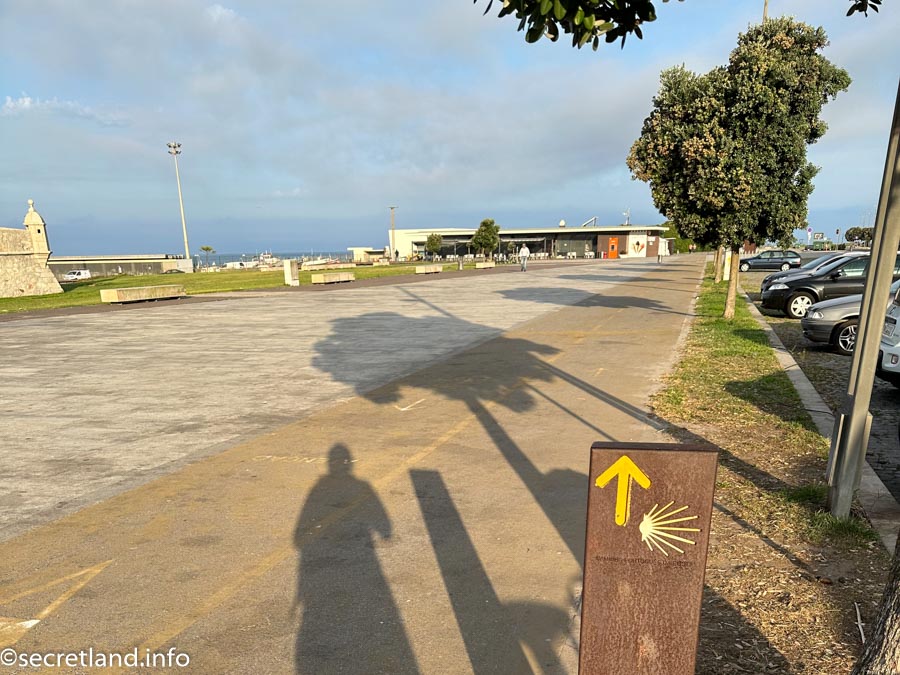
A waymarker. The yellow arrow at the bottom points the Way of St. James towards Santiago. And the blue one shows the way back — I met some travelers who were actually following the blue arrows.

As I walk the Camino along the ocean, I can’t help but stop and marvel at this breathtaking view. The rocky shoreline stretches out before me, kissed by gentle waves under the soft blue sky. The golden sunlight glows on the stones and the patches of green plants clinging to the earth. In the distance, the coastline curves away, and faint mountain peaks rise against the horizon. There’s a sense of endless space and freedom here, and the fresh ocean breeze fills me with energy and gratitude for this journey.
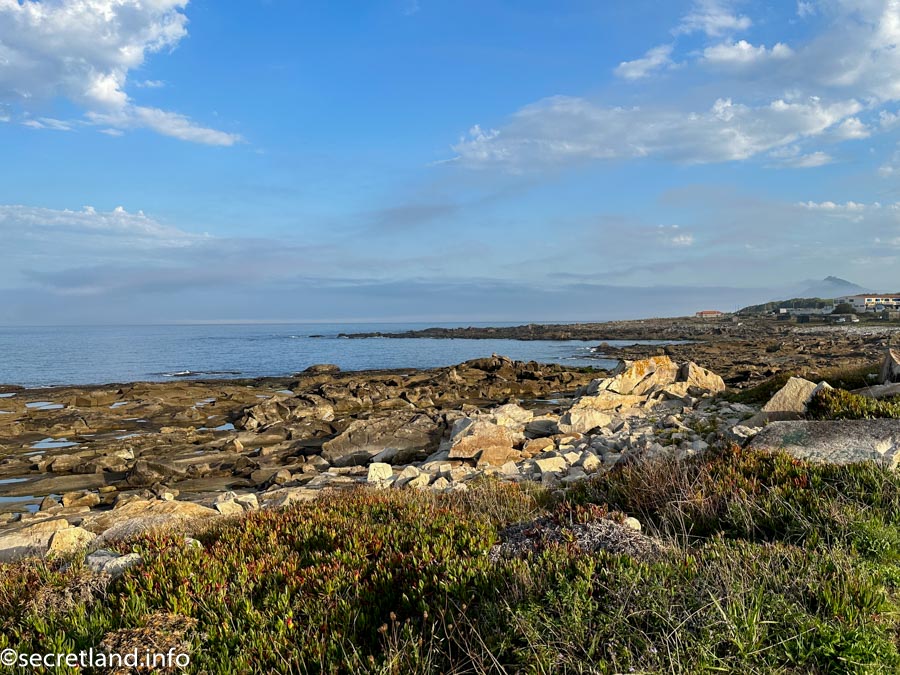
A rusted post with a yellow Camino arrow stands beside an information board on a grassy, rocky coastal path under a bright blue sky — guiding pilgrims onward along the Way of St. James.
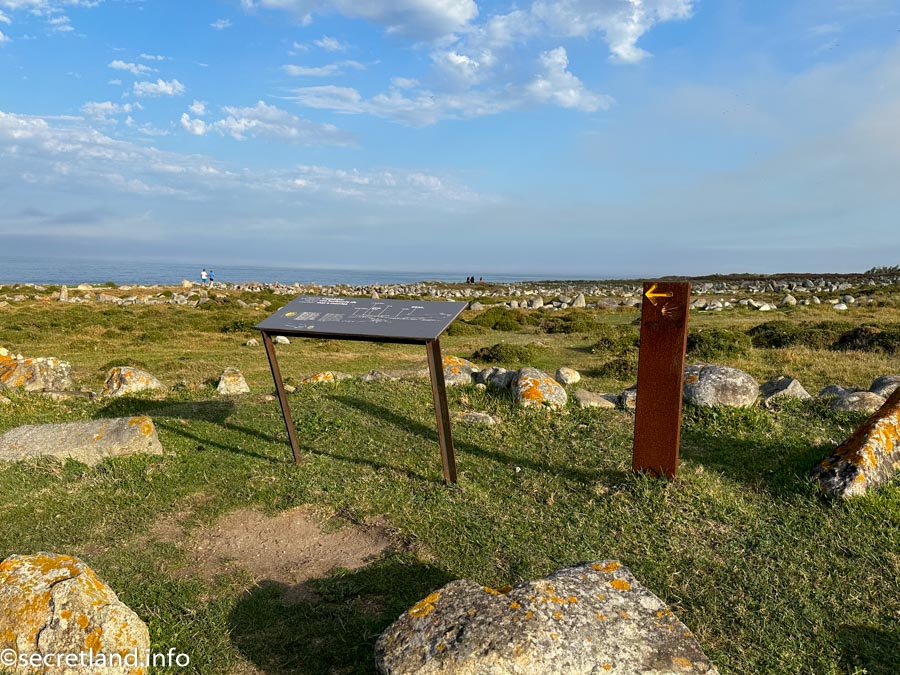
On the information board, the elevations of this area above sea level are listed.
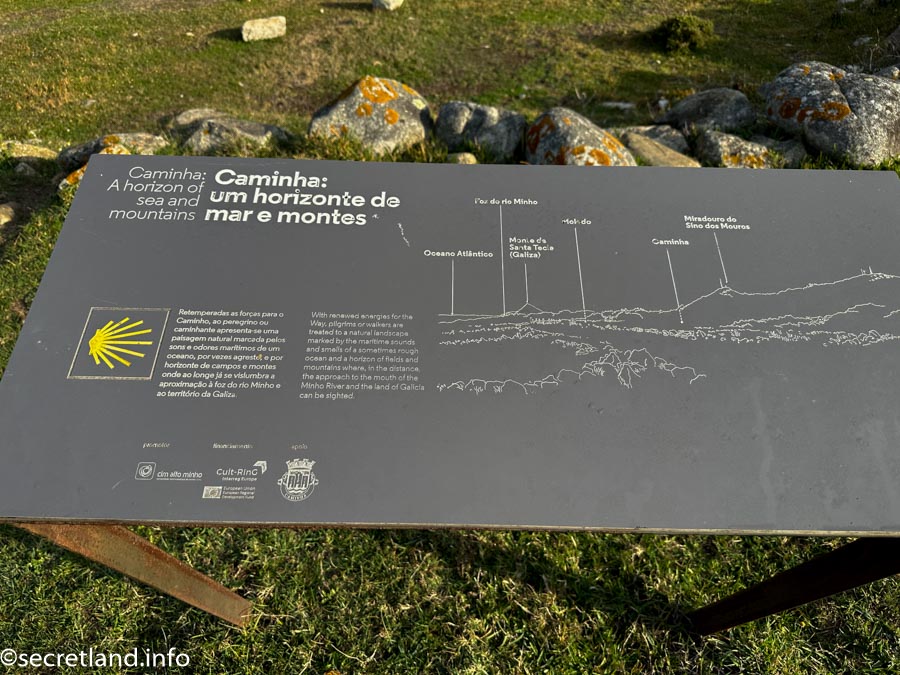
Monte de Santa Trega is already across the border in Spain, with the town of A Guarda sitting just beyond it. There’s a ruined castle up there and lots of fascinating things to see, but I didn’t end up hiking to the top.

I got my first stamp in Moledo, where a man was stamping colorful marks for anyone who wanted one, collecting donations for cats from his balcony.

A monument of a man with a net; I couldn’t find any information about what this monument represents.
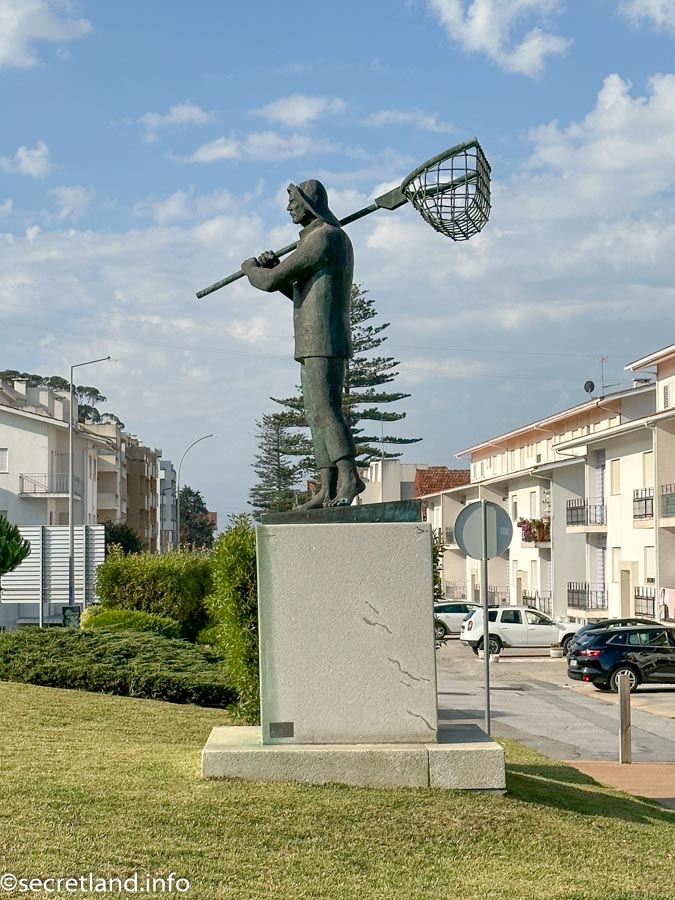
From there, the path followed the highway. I’m not a big fan of walking next to roads, but my tendons were still hurting, so I didn’t try to find alternative routes by the sea and kept going along the official Camino Portugal Coastal trail.

People are fishing or collecting something in the river, and the other side of the river is already Spain.
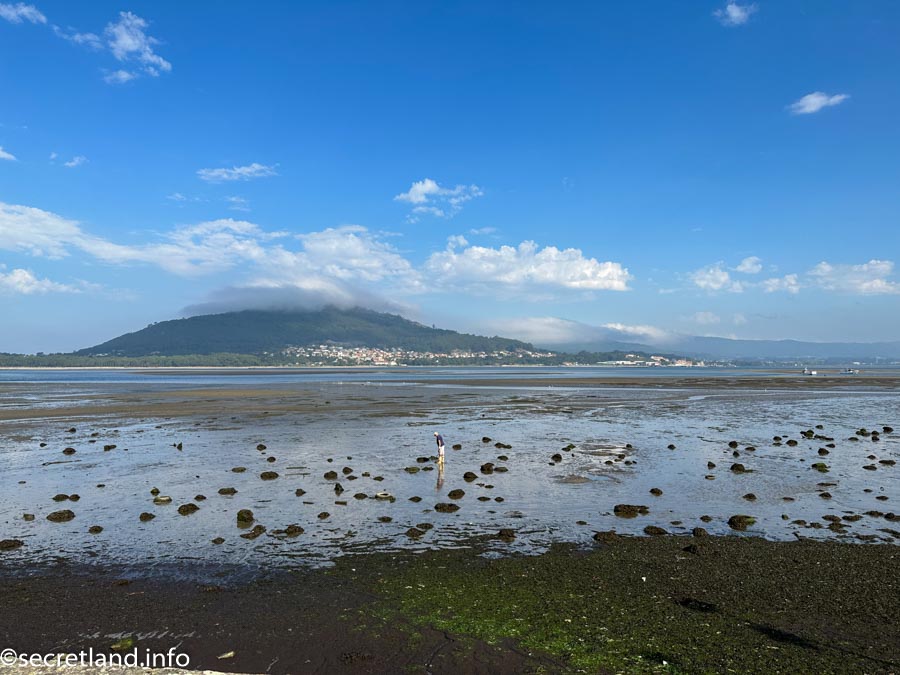
So this is Caminha, with the church Igreja Matriz de Caminha. I got to Caminha at about 10:30.

A street in Caminha that goes along the riverside promenade.
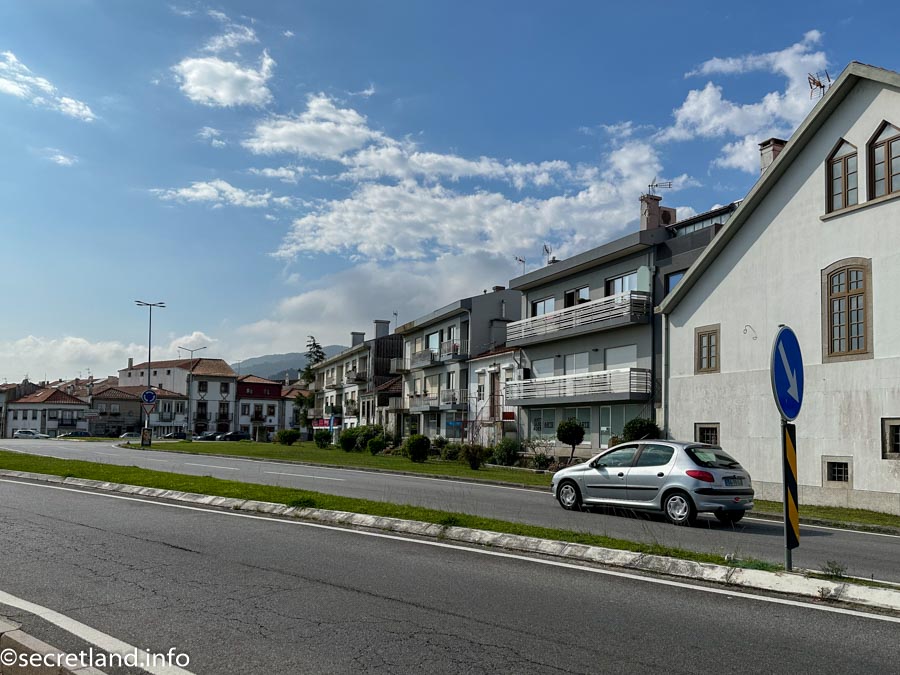
A pilgrim’s bench marked with a yellow arrow. I saw benches like this quite often along the Camino de Santiago.

The boat crossing from Caminha to A Guarda.
I read on https://stingynomads.com/ that there used to be a ferry from Caminha to A Guarda, but it’s been out of service since 2021. So now, you have to take a small boat for €6. The site also links to https://xacobeotransfer.com/en/home/ where you can buy your ticket online in advance — pick your date and time, fill in your info, and pay by card. I bought mine about a month ahead and picked the 12:30 slot. The transfer spot is marked on Google Maps.
But when I reached the waterfront in Caminha, the yellow arrows pointed left, while to get to the boat transfer, you had to go right. Some pilgrims confidently headed left, but most stopped, checked their maps, talked things over, and then went right. Since it was only 10:30 and I had two hours to wait, I decided to sit, rest, grab a snack, and watch where the other pilgrims were going.
When I finally reached the spot on the map where the transfer was supposed to be, there was just a closed ferry ticket booth, the Taximar bar, a few pilgrims hanging around, and this sign. There were no signs anywhere mentioning the Xacobeo transfer.
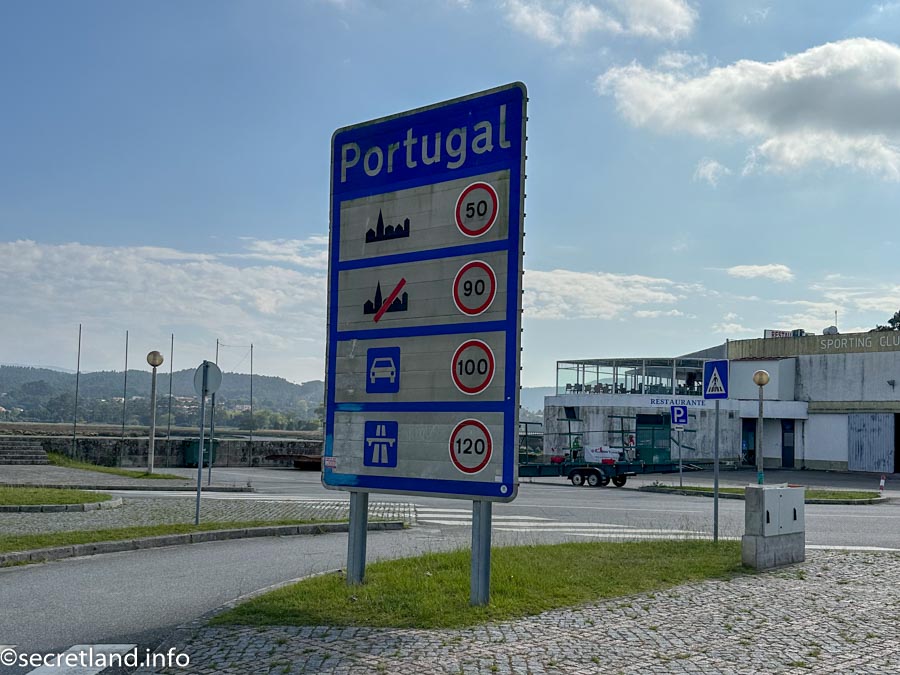
At the Taxi-mar bar, I ran into two English women who had the same 12:30 tickets as me. They told me they’d searched the entire pier but hadn’t found anything showing where the transfer actually was. Other pilgrims were buying tickets for €6 right there at Taxi-mar, and staff were driving them by car to the boat. In the end, I decided to get my ticket at Taxi-mar too instead of sitting around not knowing what was going on. The only downside was that the ticket had to be paid for in cash.
Bar Taxi-mar – https://maps.app.goo.gl/cmM8Rhh5GEPk54Wv8
Sait https://www.taxiburroperegrinos.com/
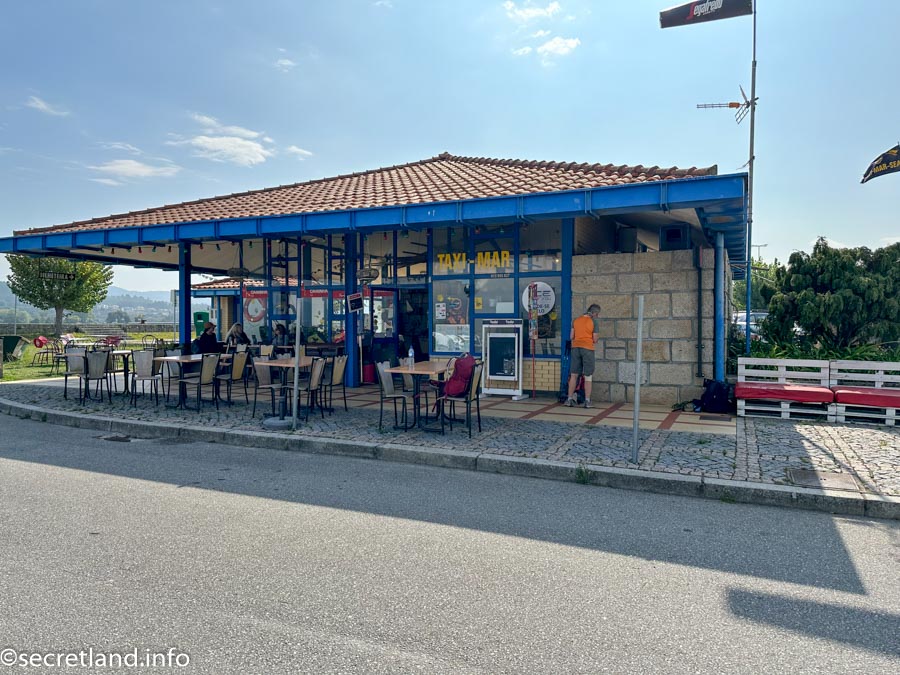
My boat ticket
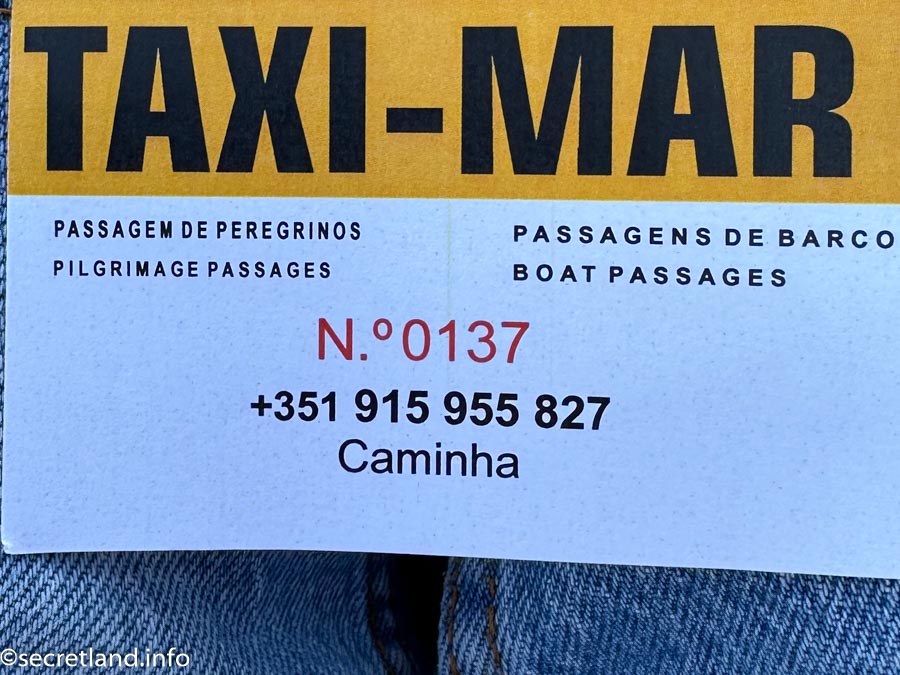
The car picks up four people at once, and the wait is around 10 minutes.
It turned out they brought us to the exact spot the yellow arrows had pointed to in the first place — that path to the left which I hadn’t followed. The arrows lead to the pier, where there are guys selling tickets and stamping pilgrim passports, and then they ferry you across to the other side.

This is the spot where the little boat to the other side was waiting. The river is calm and dotted with small boats, and across the water rises the green hill of Monte de Santa Trega. The boardwalk leads right down to the shore, with Portuguese flags fluttering in the breeze. It’s such a beautiful and peaceful place to start the short crossing into Spain!

They put four people in the boat and give everyone life jackets. The ride only takes a few minutes.

During the ride, the boat captain showed us a Portuguese fort.
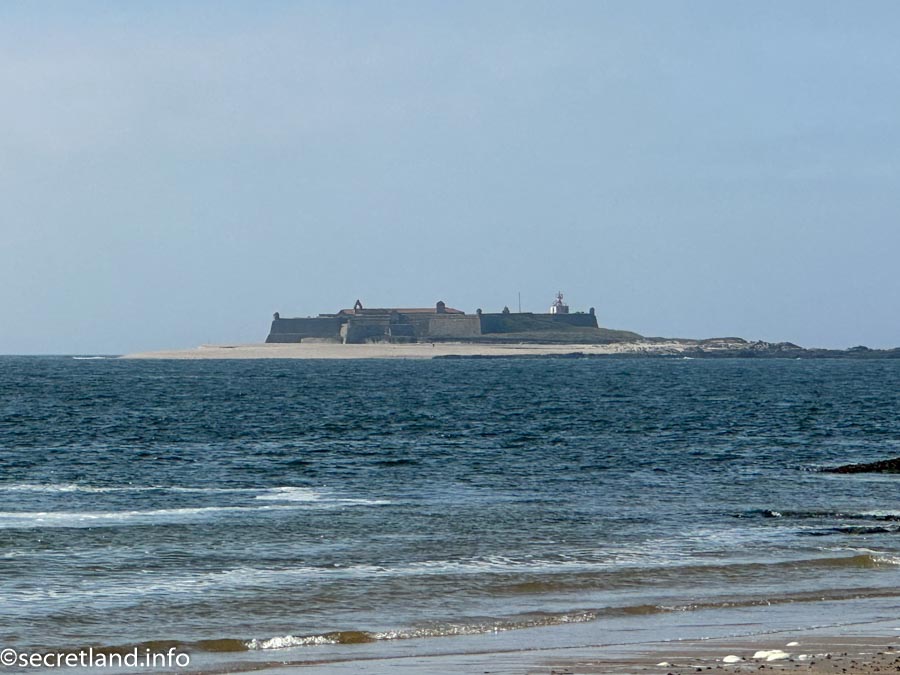
We reached the shore and were dropped off on the beach, with directions to head left. Our boat set off again to fetch a new group of pilgrims. At that point, Portugal was already on the other side.

Spain
Once I got to the Spanish side, the clock jumped an hour ahead, and suddenly it was noon. I was actually happy about it because I still had about an hour to walk to where I was staying and didn’t want to be stuck waiting outside to check in.
The trail followed the shoreline, winding around the same mountain I showed earlier. It was a wooden boardwalk. In the forest, someone had painted designs on the trees, and if you stand in certain marked spots, the drawings line up to form cool pictures.
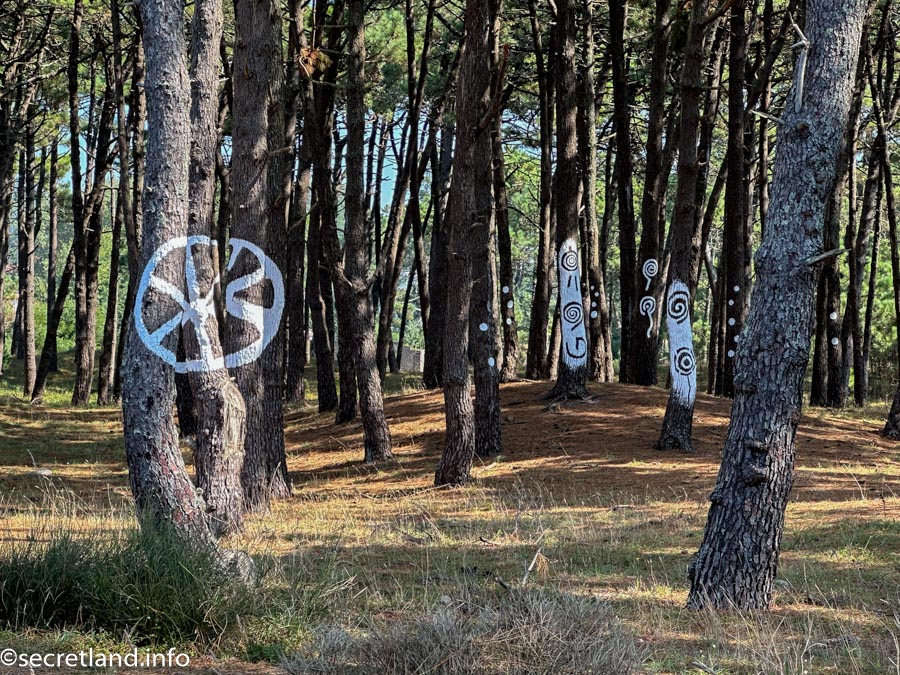
While walking through the forest, I ran into a big organized group of English-speaking pilgrims being led by a guide.
The path continued along the ocean, now following the Spanish coastline, and the views were simply stunning. The trail wound past rugged rocks and patches of wild grass, with the deep blue sea stretching out under a bright sky. It felt peaceful and wild at the same time — such a beautiful part of the journey!

There’s a fort visible in the distance. It’s called Fortaleza e Convento da Ínsua.
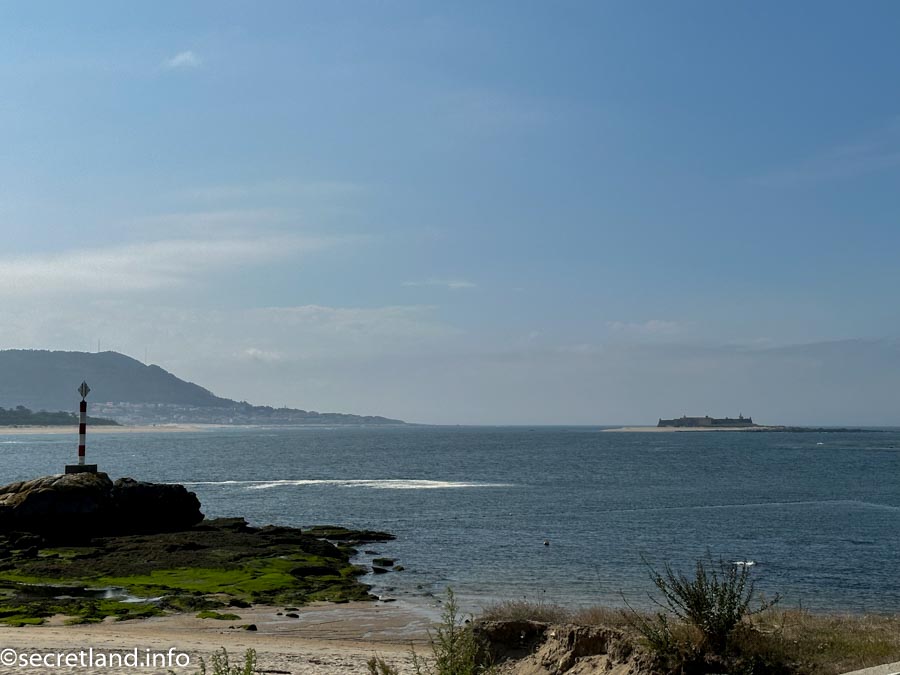
A map of the route around Monte Santa Trega, with all the pilgrim facilities marked.
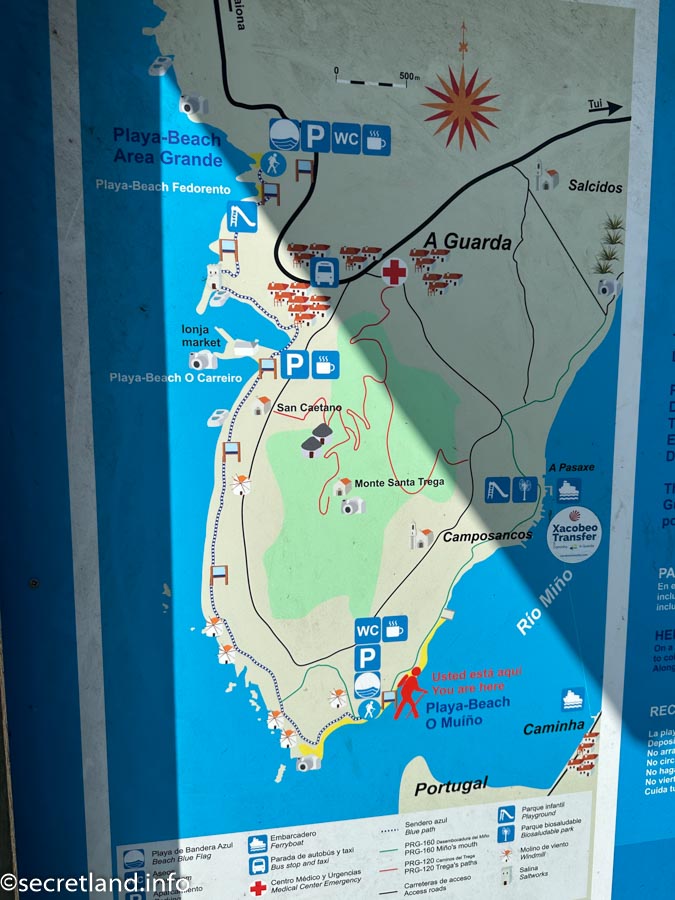
A lovely wooden boardwalk kept leading me forward. The girls ahead were people I kept bumping into along the Camino — we even stayed at the same hotel once, and I saw them again later at the Pilgrims’ Office in Santiago.
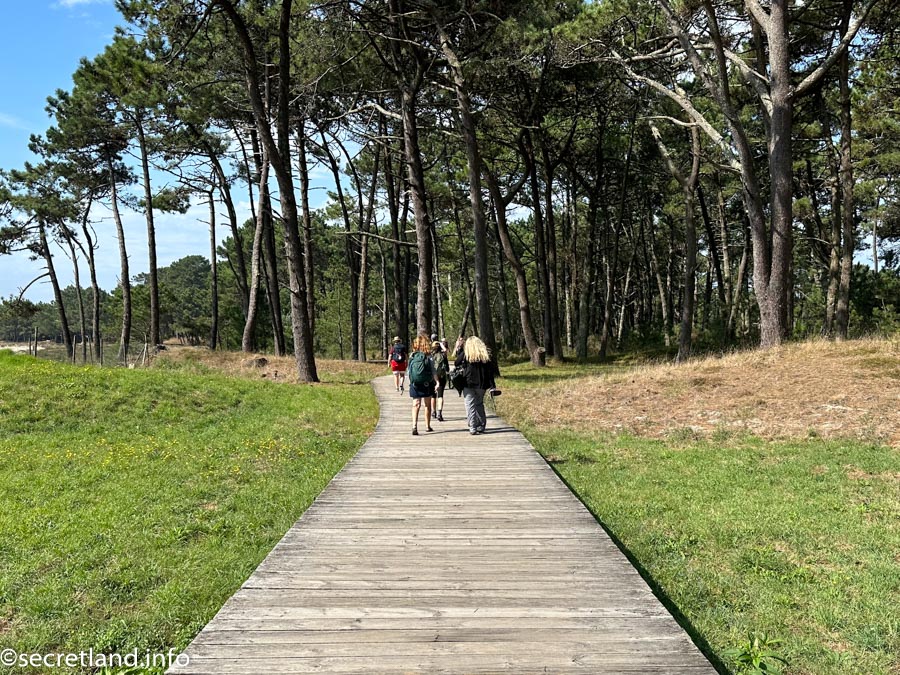
Nature in Spain — I loved the pine cones on this tree. The branches were full of them, hanging among the long green needles and catching the sunlight. It felt so peaceful walking under these trees, surrounded by the fresh scent of pine and the soft rustling of the leaves in the breeze.
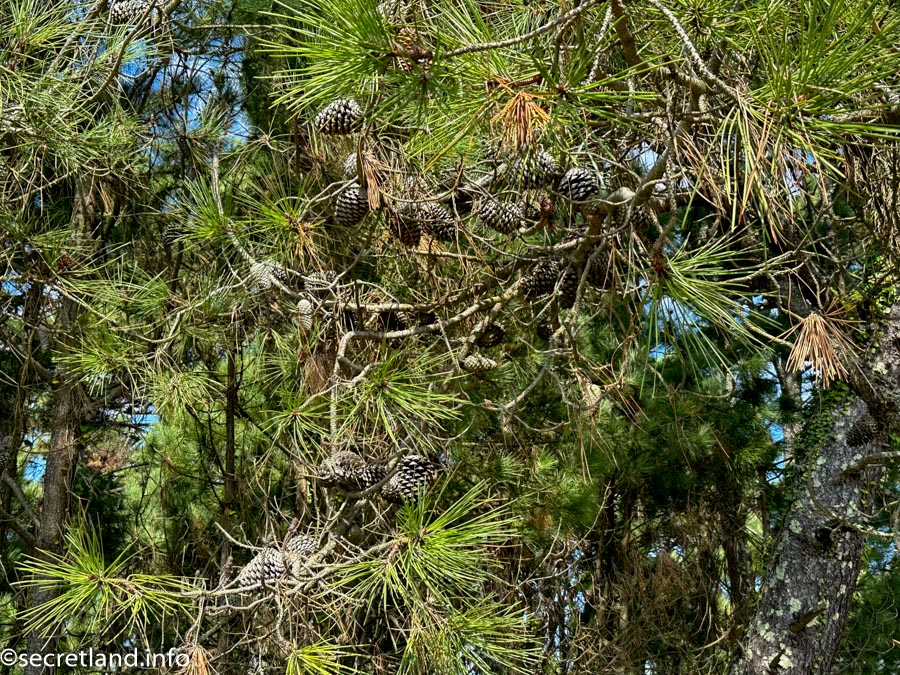
As soon as I entered Spain, I began noticing lots of horses along the way.

The wooden boardwalk keeps going. It’s interesting that in Portugal, these kinds of wooden paths almost always have railings.
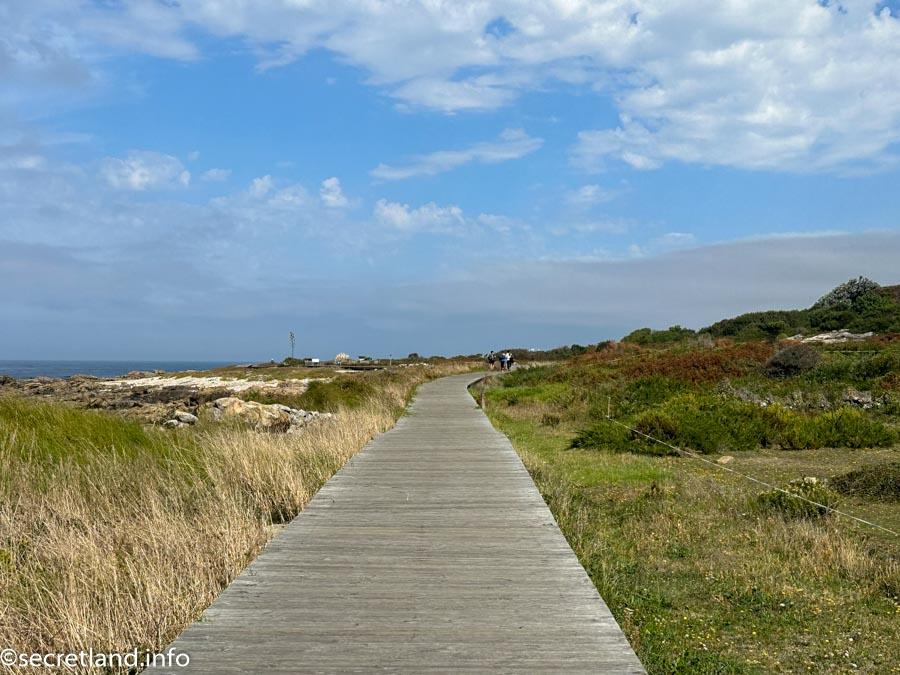
After that, the wooden boardwalk came to an end, and I found myself in a village with a stone pathway.
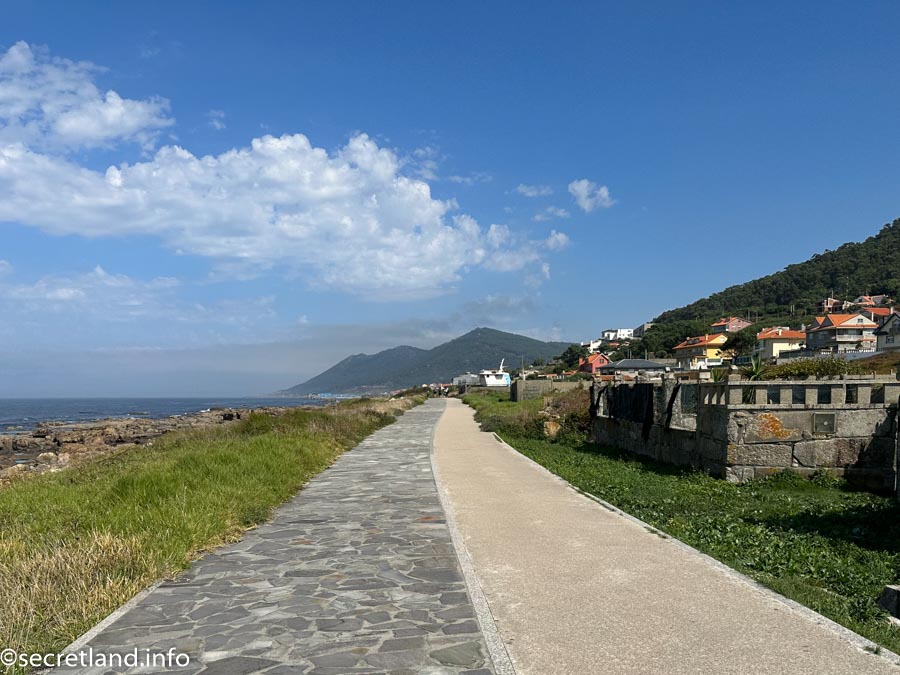
A Guarda
Up ahead, I could see the town of A Guarda nestled among green hills.

Lovely colorful houses lining the area just beyond A Guarda Harbour.
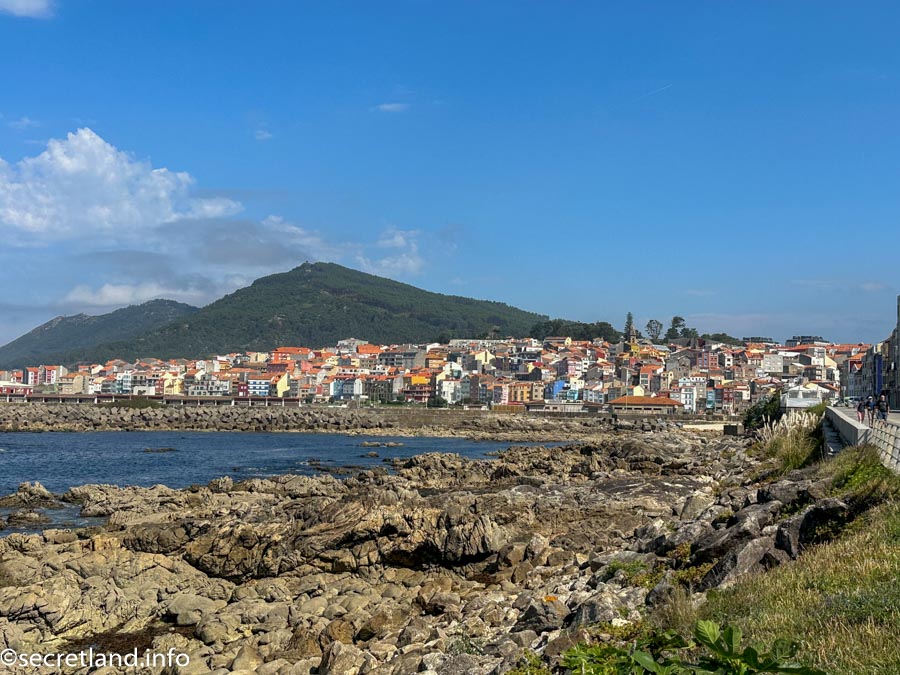
A traditional statue honoring fishermen, called Monumento al Pescador.
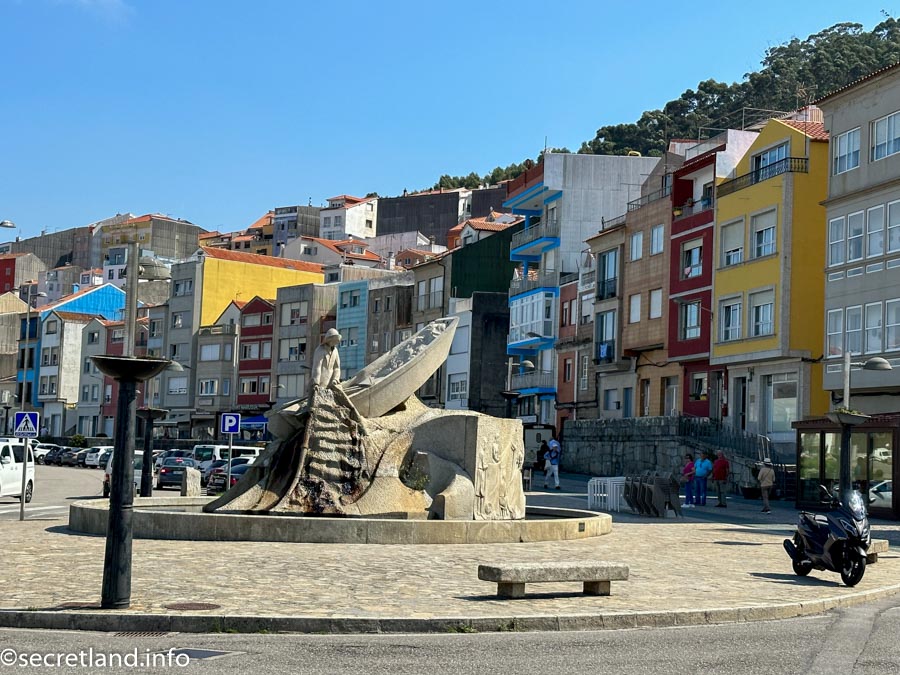
A Guarda is such a beautiful town. Colorful houses climb up the hillside, creating a vibrant patchwork against the green mountains and the deep blue sea. The harbor sparkles under the sun, and the whole place feels lively and full of charm. It’s definitely worth a visit!
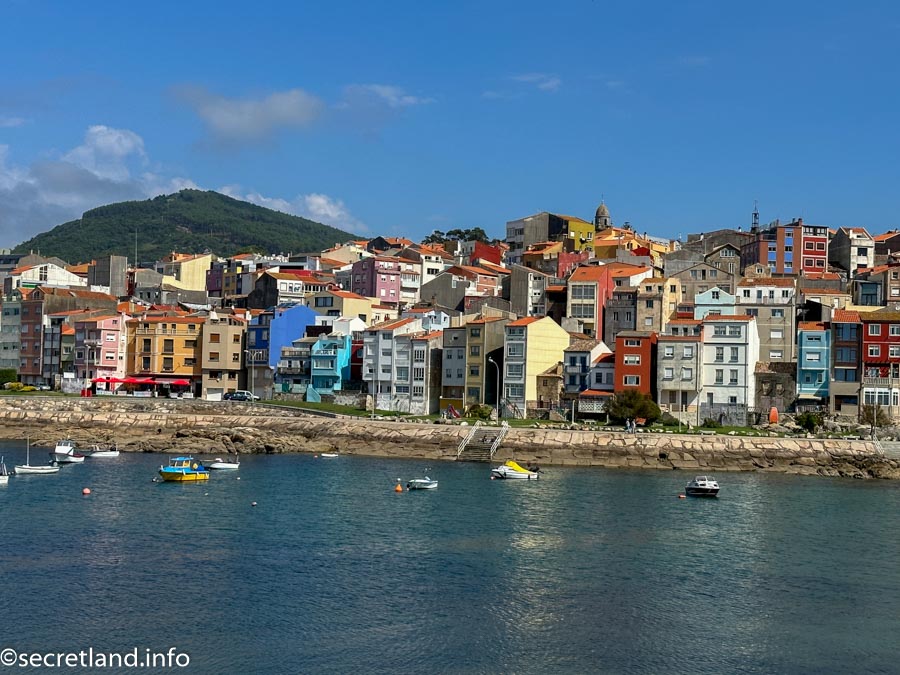
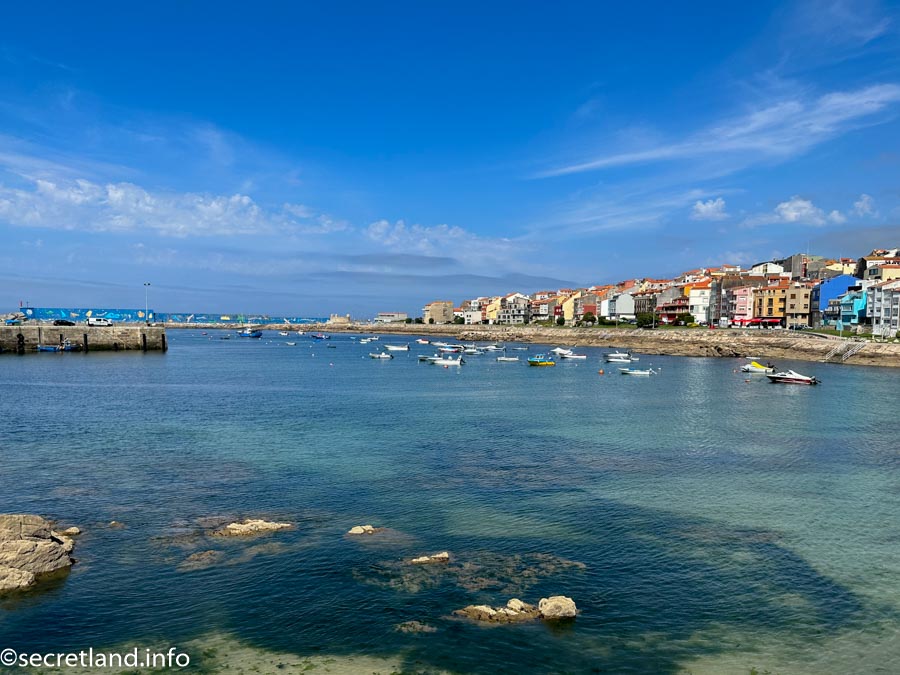
Where to stay in A Guarda.
I’d booked a room at Hostal del Mar, so I had to trek across the whole town, climbing steep steps and then going downhill — not exactly fun for a pilgrim’s sore feet. When I finally got there, I realized the hotel was right on the beach, with just a café nearby. The nearest grocery store was a 650-meter walk uphill.
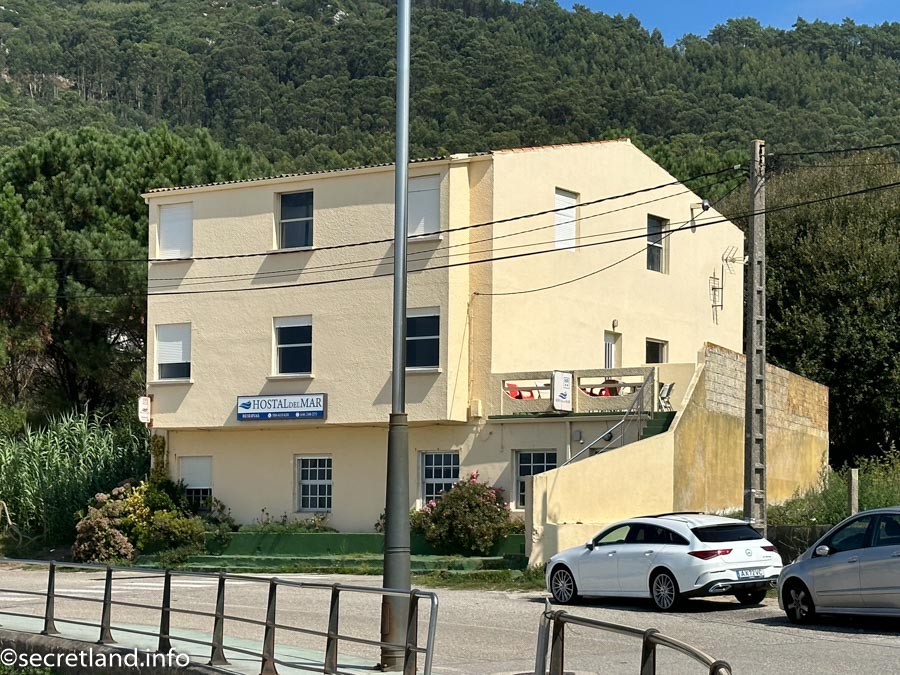
There was no receptionist around, and there were already three pilgrims sitting in the lobby — a woman and two men chatting in English. From what I gathered, the woman had booked her room ahead of time, but the two guys were just trying to find a place to stay on the spot. The woman got tired of waiting and called the manager, who explained how to get into her room, and then she left.
I was starting to feel stressed about the whole situation. I didn’t like this hotel at all — it had no Wi-Fi, and going back to the center of town was a 1.5-kilometer walk. And I definitely didn’t want to spend the entire evening sitting on the beach. So I quickly found a better option on booking.com, canceled my reservation, and headed back into town to Hotel Bruselas. It turned out to be the best choice I could’ve made.
Once I settled into the hotel, I relaxed for a bit, strolled around the town, picked up some groceries at the supermarket, and had a really lovely evening.
My dinner that cost 10 euros.
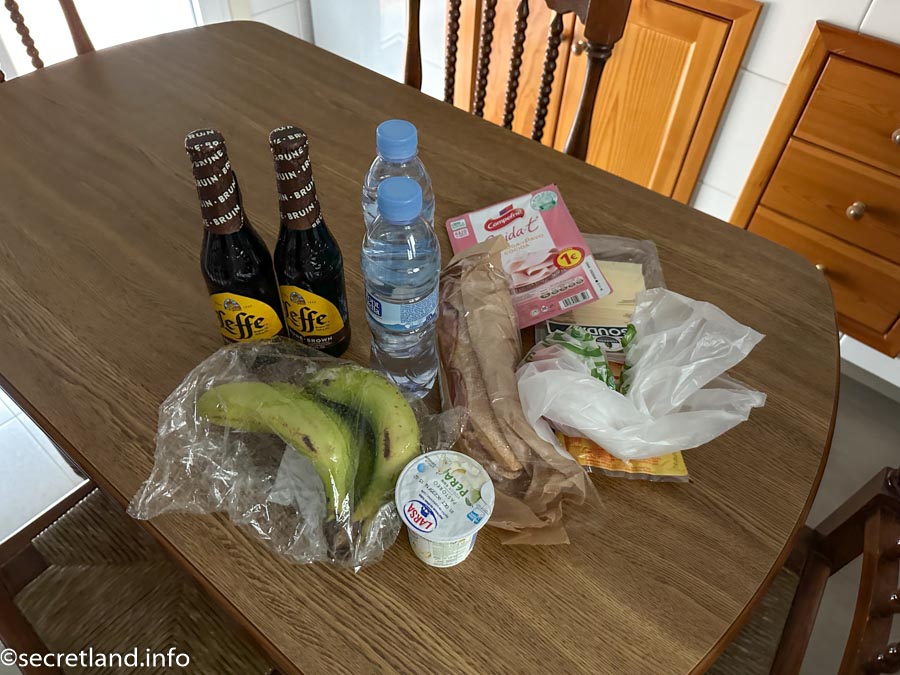
Today’s stats. They count my walk to the hostel and back, which added an extra three kilometers, so the real distance is more like 14 km.
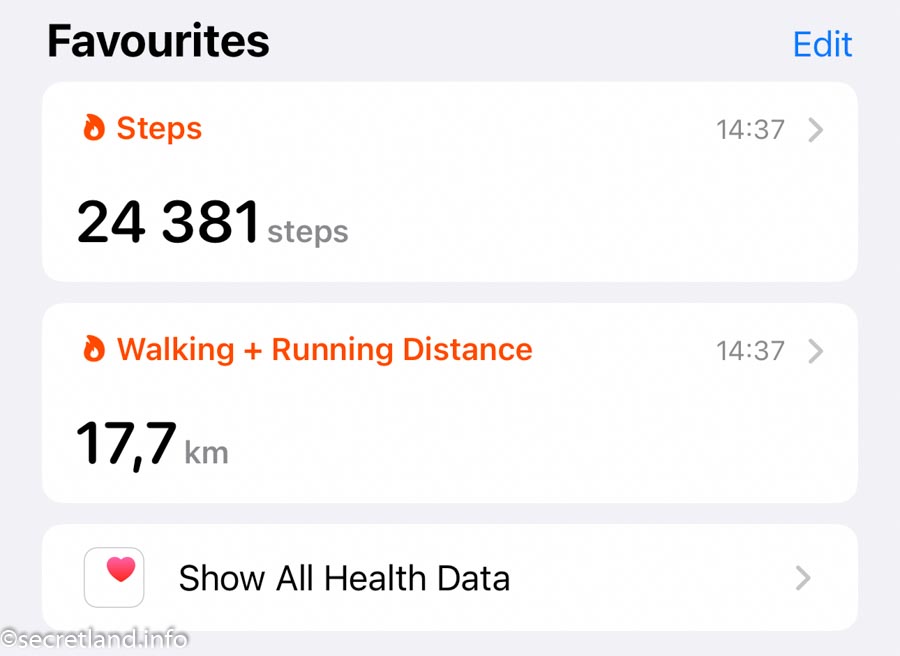
Spain
Hotels
- Hotel Atlántico Vigo
- Hotel Bruselas in A Guarda
- Hotel Scala, Padrón
- Hotel Holiday, Nigrán
- Martínez Rooms Pilgrims — apartments in Caldas de Reis
- A Boa Estrela Pension in Redondela
- Hotel Don Pepe, Poio
- Alojamiento Camino Portugues Oia, Villadesuso
- Rey Fernando Guesthouse in Santiago de Compostela
Cities
Camino
- How to walk the Way of Saint James
- Camino Portuguese – Day Five – Vila Praia de Âncora – A Guarda 14 km
- Camino Portuguese — Day Six — A Guarda — Villadesuso 18.8 km
- Camino Portuguese — Day Seven — Villadesuso to Nigrán, 19.5 km
- Camino Portuguese – Day Eight – Nigrán to Vigo, 22 km
- Camino Portuguese — Day Nine — Vigo — Redondela 15.7 km
- Camino Portuguese – Day Ten – Redondela – Pontevedra 21 km
- Camino Portuguese — Day Eleven — Pontevedra — Caldas de Reis 20 km
- Camino Portuguese – Day Twelve – Caldas de Reis to Padrón, 19.7 km
- Camino Portuguese – Day Thirteen – Padrón – Santiago de Compostela 22.5 km
Portugal
Porto
Hotels
- Residencial Princesa do Ave, Vila do Conde
- Baixinho Guest House, Vila Praia de Âncora
- Hotel Terra Linda, Viana do Castelo
- River Zen House, Esposende
Towns
Camino Portuguese
- Camino Portuguese – Day One – Porto — Vila do Conde
- Camino Portuguese – Day two – Vila do Conde – Esposende
- Camino Portuguese – Day three – Esposende – Viana do Castelo
- Camino Portuguese — Day Four — Viana do Castelo — Vila Praia de Âncora 17.5 km
- Camino Portuguese – Day Five – Vila Praia de Âncora – A Guarda 14 km
Discover more from Secret land
Subscribe to get the latest posts sent to your email.
